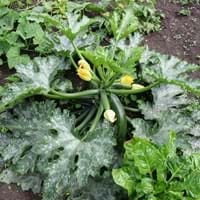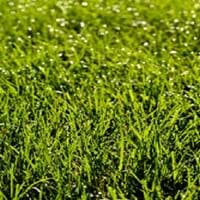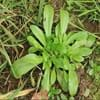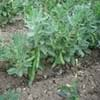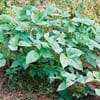Life Span
Annual
Perennial
Origin
America
Southern Asia, India
Types
Not Available
Not Available
Number of Varieties
Not Available
Habitat
agricultural areas
Warmer regions
USDA Hardiness Zone
Not Available
6-11
AHS Heat Zone
Not Available
11- 6
Sunset Zone
Not Available
H1, H2, 5, 6, 7, 8, 9, 10, 12, 13, 14, 15, 16, 17, 18, 19, 20, 21, 22, 23, 24
Habit
Bushy, Evergreen
Mat-forming
Flower Color
Lavender
Not Available
Flower Color Modifier
Bicolor
Bicolor
Fruit Color
Purple, Black
Not Available
Leaf Color in Spring
Green
Gray Green, Dark Green
Leaf Color in Summer
Green
Light Green
Leaf Color in Fall
Green
Gray Green, Dark Green
Leaf Color in Winter
Green
Gray Green, Dark Green, Tan
Leaf Shape
Heart shaped, toothed with three to five lobes
Arrowhead
Plant Season
Not Available
Spring, Summer, Fall, Winter
Sunlight
Full Sun
Full Sun
Type of Soil
Loam, Moist, Well drained
Clay, Loam, Sand
The pH of Soil
Acidic, Neutral, Alkaline
Acidic, Neutral, Alkaline
Soil Drainage
Well drained
Well drained
Bloom Time
Indeterminate
Indeterminate
Tolerances
Drought, Pollution, Shade areas, Soil Compaction
Pollution, Salt, Soil Compaction
Where to Plant?
Ground
Container, Ground
How to Plant?
Seedlings
Seedlings
Plant Maintenance
Medium
Medium
Watering Requirements
Allow soil to be completely dry in between waterings, Do not water excessively
Average Water Needs
In Summer
Lots of watering
Lots of watering
In Spring
Moderate
Moderate
In Winter
Average Water
Average Water
Soil pH
Acidic, Neutral, Alkaline
Acidic, Neutral, Alkaline
Soil Type
Clay, Loam, Sand
Clay, Loam, Sand
Soil Drainage Capacity
Well drained
Well drained
Sun Exposure
Full Sun
Full Sun
Pruning
cut main flower spike, Proper mowing practices are necessary, Remove damaged fruit
No pruning needed
Fertilizers
Balanced liquid fertilizer every 4 weeks, Compost
Apply 3-1-2 or 4-1-2 ratio, Nitrogen
Pests and Diseases
Bacterial Stem Rot, Mildew, Red blotch, Ring Rot, White spots
Red blotch
Plant Tolerance
Shade areas, Shallow soil, Soil Compaction
Pollution, Salt, Soil Compaction
Flowers
Showy
Insignificant
Flower Petal Number
Single
Single
Fragrant Bark/Stem
Yes
No
Foliage Texture
Medium
Fine
Foliage Sheen
Matte
Matte
Self-Sowing
Not Available
Yes
Attracts
Leafminer, Mice, Not Available, Rodents
Flying insects, Insects
Allergy
Sore Throat, Stomach pain
breathing problems, Eye irritation, Hives, Itchiness, Runny nose, sneezing, Throat itching, Whooping Cough
Aesthetic Uses
Ornamental use
Ground Cover, Landscape Designing
Beauty Benefits
Anti-ageing, Remove blemishes
Skin irritation, Skin Problems
Edible Uses
Yes
Insignificant
Environmental Uses
Fixes Nitrogen, Food for animals
Air purification, Prevent Soil Erosion, soil stabilisation
Medicinal Uses
Antibacterial, Antioxidants, Detoxification, Rich in Potassium, Weight loss
Cures constipation, Cures foot fissures, Digestive disorders, Eliminate toxins, Fatigue, Halitosis, Improves Breast milk production, Increase red blood cells, Insomnia
Part of Plant Used
Flowers, Fruits
Leaves, Stem
Other Uses
Cattle Fodder, Culinary use, Used as a laxative
Animal Feed, Cattle Fodder, Used as Ornamental plant
Used As Indoor Plant
No
Insignificant
Used As Outdoor Plant
Yes
Yes
Garden Design
Container, Edible, Herb, Vegetable
Lawns and Turf
Botanical Name
Cucurbita pepo
CYNODON dactylon
Common Name
Zucchini, courgette
Bermuda Grass
In German
Zucchini
Bermuda Gras
In French
Courgette
l'herbe des Bermudes
In Spanish
calabacín
Grama
In Greek
κολοκύθι
Αγριάδα
In Portuguese
abobrinha
grama Bermuda
In Polish
Kabaczek
Trawa Bermuda
In Latin
zucchini
Bermuda Grass
Phylum
Magnoliophyta
Magnoliophyta
Class
Magnoliopsida
Liliopsida
Family
Cucurbitaceae
Poaceae
Genus
Cucurbita
Cynodon Rich
Clade
Not Available
Angiosperms, Commelinids
Tribe
Not Available
Chlorideae
Subfamily
Not Available, Solanoideae
Chloridoideae
Number of Species
Not Available
Importance of Zucchini and Bermuda Grass
Want to have the most appropriate plant for your garden? You might want to know the importance of Zucchini and Bermuda Grass. Basically, these two plants vary in many aspects. Compare Zucchini and Bermuda Grass as they differ in many characteristics such as their life, care, benefits, facts, etc. Every gardener must at least have the slightest clue about the plants he wants to plant in his garden. Compare their benefits, which differ in many ways like facts and uses. The medicinal use of Zucchini is Antibacterial, Antioxidants, Detoxification, Rich in Potassium and Weight loss whereas of Bermuda Grass is Cures constipation, Cures foot fissures, Digestive disorders, Eliminate toxins, Fatigue, Halitosis, Improves Breast milk production, Increase red blood cells and Insomnia. Zucchini has beauty benefits as follows: Anti-ageing and Remove blemishes while Bermuda Grass has beauty benefits as follows: Anti-ageing and Remove blemishes.
Compare Facts of Zucchini vs Bermuda Grass
How to choose the best garden plant for your garden depending upon its facts? Here garden plant comparison will help you to solve this query. Compare the facts of Zucchini vs Bermuda Grass and know which one to choose. As garden plants have benefits and other uses, allergy is also a major drawback of plants for some people. Allergic reactions of Zucchini are Sore Throat and Stomach pain whereas of Bermuda Grass have breathing problems, Eye irritation, Hives, Itchiness, Runny nose, sneezing, Throat itching and Whooping Cough respectively. Having a fruit bearing plant in your garden can be a plus point of your garden. Zucchini has showy fruits and Bermuda Grass has no showy fruits. Also Zucchini is not flowering and Bermuda Grass is not flowering . You can compare Zucchini and Bermuda Grass facts and facts of other plants too.
